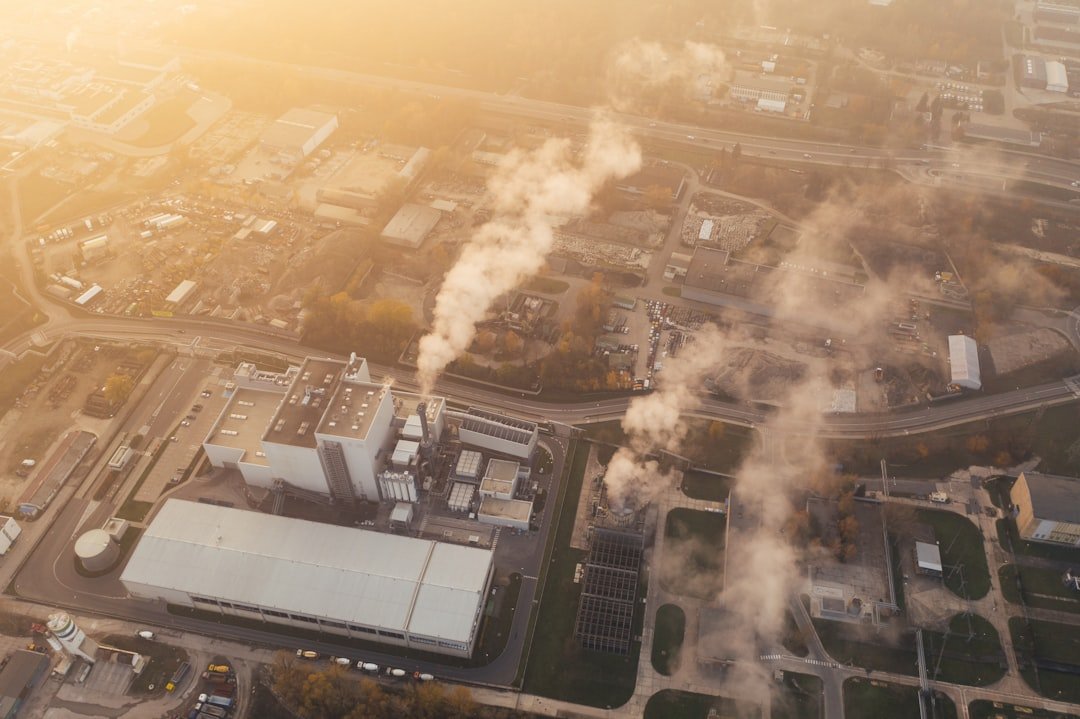Noise Pollution: A Comprehensive Examination Often disregarded when talking about environmental deterioration, noise pollution has become a major issue in contemporary society. Noise pollution, which can originate from a variety of sources & has major effects on the ecosystem and human health, is defined as undesired or harmful noise levels that disturb the natural balance of sound in the environment. Noise pollution has become increasingly prevalent as urban areas and industrial activity have grown, necessitating awareness and action. Noise pollution is a serious public health concern, according to the World Health Organization (WHO), which has linked it to a number of illnesses and a lower standard of living.
Key Takeaways
- Noise pollution is the presence of unwanted or disturbing sound that can have harmful effects on human health and the environment.
- Common sources of noise pollution include industrial activities, transportation and traffic, human activities, and urbanization.
- Noise pollution can lead to various health issues such as hearing loss, sleep disturbances, stress, and cardiovascular problems.
- Environmental impact of noise pollution includes disruption of wildlife, interference with animal communication, and damage to ecosystems.
- Urbanization and industrialization contribute to noise pollution through increased construction, traffic, and industrial activities.
Many people find it challenging to escape the unrelenting din of urban life, which includes everything from honking cars to construction activities. This article seeks to examine the causes, consequences, and possible remedies of noise pollution while emphasizing its importance in modern society. Although the sources of noise pollution are varied, they can be divided into a number of important categories. One of the main causes is urbanization, where noise levels rise due to the concentration of people and activities.
Because people are constantly moving around in residential areas close to busy roads, business districts, and entertainment venues, the noise levels are frequently higher. A continuous background hum that combines the sounds of machinery, music, & conversations can be dangerous as well as annoying. An important contributing factor to noise pollution is industrial activity. A variety of noises are produced by factories, building sites, and manufacturing facilities, including the movement of heavy machinery.
These noises can cause complaints & health issues for local residents in addition to having an impact on on-site employees. Also, agricultural activities like the use of tractors and other equipment add to the general noise environment, especially in rural areas where farming is becoming more industrialized. The effects of noise pollution on health are extensive and complex.
| Causes of Noise Pollution | Effects |
|---|---|
| Transportation (road, air, rail) | Hearing loss, sleep disturbance |
| Industrial activities | Stress, communication interference |
| Construction and demolition | Cardiovascular issues, reduced productivity |
| Recreational activities (loud music, sports events) | Annoyance, disturbance of wildlife |
Numerous physical & mental health problems have been linked to extended exposure to loud noises, according to research. Stress-related disorders are among the most frequently reported effects. The body’s stress response, which raises cortisol and other stress hormones, can be brought on by the continuous clamor of sound. Chronic stress over time can lead to major health issues like anxiety disorders, heart disease, and high blood pressure. Also, sleep disruptions have been connected to noise pollution, which may have a domino effect on general health.
Noisy surroundings frequently cause people to have trouble falling or staying asleep, which results in daytime fatigue and diminished cognitive function. According to studies, kids who are around a lot of noise may have trouble learning and perform worse academically. Living near noise can have an equally alarming effect on mental health; people may become more irritable, have mood swings, or even suffer from depression. In addition to its negative impacts on human health, noise pollution seriously endangers wildlife and natural ecosystems.
A lot of animal species use sound for mating rituals, communication, & navigation. Raising noise levels can interfere with these vital processes, which can change migration patterns and reduce the success of reproduction. For example, marine animals like whales and dolphins are especially at risk because industrial activity and shipping noise can disrupt their echolocation skills, making it harder for them to find food or interact with one another. Also, sensitive species may be driven from their natural habitats by noise pollution, which can change habitat dynamics.
Animals may be compelled to relocate to less ideal habitats where food is limited or competition is fierce as they escape noisy areas. Ecosystems’ delicate balance may be upset and biodiversity may decline as a result of this displacement. The cumulative impact of noise pollution on aquatic and terrestrial environments emphasizes the necessity of all-encompassing approaches to lessen its effects. The two main causes of noise pollution in modern society are urbanization and industrialization. There is a sharp rise in demand for housing, transportation, & services as cities grow to accommodate expanding populations. This quick development frequently results in the construction of new roads, buildings, and infrastructure projects, all of which produce a significant amount of noise during the building and operation stages.
The commotion of urban life, which is typified by busy streets crowded with cars, pedestrians, & business activity, produces an atmosphere where noise is a constant. Because industrialization brings large machinery and equipment into the landscape, it makes this problem even worse. The continuous noise from factories that run around the clock fills the surrounding communities. For people who live close to these industrial areas, the sounds of machinery combined with the noise from trucks and freight trains transporting goods can create an overwhelming cacophony.
It is more important than ever to address the problems caused by noise pollution as urbanization continues unchecked. One of the biggest causes of noise pollution in cities is the transportation infrastructure. Because cars, buses, and trucks are constantly moving along congested thoroughfares, road traffic is especially known for producing loud noises.
Even in residential neighborhoods that are somewhat remote from major roads, there is a constant background hum produced by the combination of honking horns, tire friction against pavement, and engine noise. Another significant factor in noise pollution is air traffic. Airports close to densely populated areas expose locals to the deafening noise of airplanes taking off & landing all day and night. Sleep patterns and general well-being may be impacted, and this disruption may cause major disruptions in day-to-day living. Trains moving through cities produce sounds and vibrations that are audible long after they have left, which is another way that rail traffic adds to noise pollution.
Numerous environments’ noise pollution levels are greatly influenced by human activity and lifestyle decisions. Recreational activities like loud music events, athletic events, or even backyard get-togethers, for example, can raise noise levels in residential areas. Even though the participants frequently enjoy these activities, neighbors who might not be as fond of loud noises may find them to be disruptive. Also, transportation-related lifestyle decisions may make noise pollution problems worse. Preference for private automobiles over public transit adds to traffic jams and the noise levels that go along with them.
This issue is made worse by urban planning choices that put automobile-centric infrastructure ahead of pedestrian-friendly designs. Creating a culture that encourages peaceful options like walking or bicycling can help lessen some of the negative effects of noise pollution as cities continue to expand. In order to effectively combat noise pollution, government organizations, urban planners, corporations, and communities must work together. Putting stronger restrictions on noise emissions from transportation and industrial sources into place is one practical tactic. Vulnerable populations can be shielded from excessive noise exposure by creating quiet zones in residential areas.
Another important factor in reducing noise pollution is urban planning. Green spaces can be incorporated into mixed-use city designs to help isolate residential neighborhoods from busy business districts or transit routes. Buildings close to busy areas can also benefit from soundproofing technologies, which can shield occupants from outside noise sources. Campaigns to raise public awareness of the effects of noise pollution and to promote responsible behavior are crucial. Promoting more peaceful lifestyle choices, like taking public transit or taking part in neighborhood gatherings that emphasize low-noise activities, can help create a culture that values quiet over noise. In summary, noise pollution has significant effects on health and wellbeing even though it is frequently written off as a minor annoyance rather than a major environmental problem.
By comprehending its causes and consequences & proactively pursuing remedies, society can make significant progress in establishing more tranquil and healthful surroundings for everyone.



